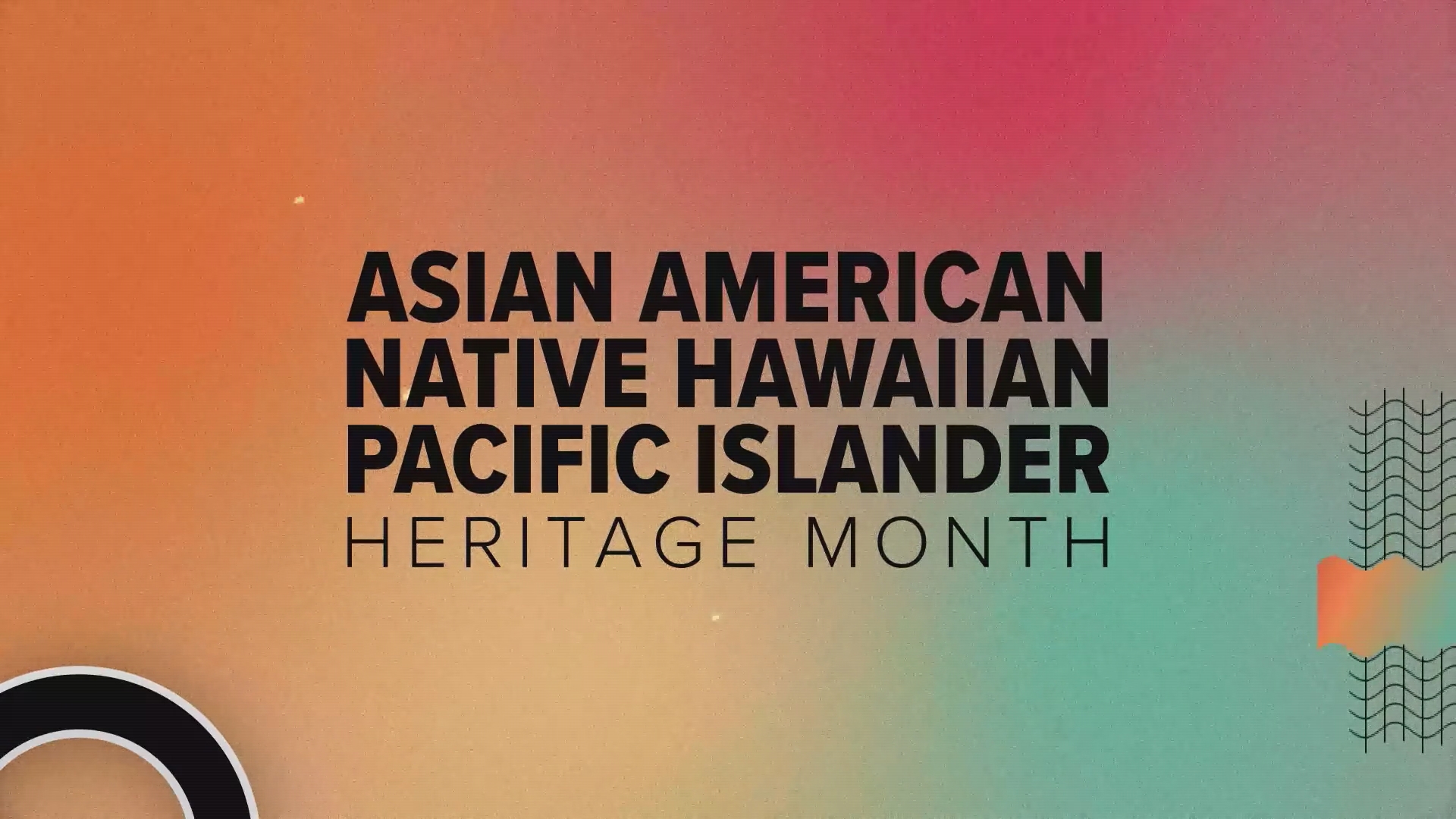Asian American, Native Hawaiian and Pacific Islander (AANHPI) Heritage Month shines a spotlight on the culture, history and achievements of the AANHPI community in the United States.
Some people online are wondering why AANHPI Heritage Month is celebrated in May. VERIFY is breaking down the history that led to the selection of this month for the designation.
THE SOURCES
- AANHPI Heritage Month official website
- U.S. Census Bureau
- National Museum of American History
- National Endowment for the Humanities
- National Park Service
- Library of Congress
- New American Economic Research Fund
- Brittany Erkeneff, national deputy director of the Asian Pacific Islander American Public Affairs Association (APAPA)
WHAT WE FOUND
Why is AANHPI Heritage Month celebrated in May?
AANHPI stands for Asian American, Native Hawaiian and Pacific Islander, a distinction representing those whose ancestry and culture come from Asia and the Pacific islands of the Melanesia, Micronesia, and Polynesia regions.
In 1992, Congress passed a law to annually designate May as Asian American and Pacific Islander (AAPI) Heritage Month. The act of Congress aimed to recognize that “Asian and Pacific Americans have contributed significantly to the development of the arts, sciences, government, military, commerce, and education in the United States.”
AANHPI Month is celebrated in May to commemorate two historic moments: The arrival of the first Japanese immigrant to the United States on May 7, 1843, and the contributions of Chinese workers to the Transcontinental Railroad, which was completed on May 10, 1869.
Who was the first Japanese immigrant in the United States?
The first Japanese national to set foot on American soil was a 14-year-old fisherman named Manjiro, the National Endowment of the Humanities (NEH) says.
During a fishing trip in 1841, Manjiro’s crew was caught up in a violent storm and their ship eventually washed up on an island 300 miles away from their coastal Japanese village. Five months later, an American whaling ship from Massachusetts rescued them, according to the NEH.
William Whitfield, the American ship’s captain, adopted Manjiro and renamed him John Mung. Whitfield brought Manjiro back to America on May 7, 1843. He lived in Whitfield’s hometown of Fairhaven, Massachusetts, where he studied English and navigation.
Manjiro traveled back to Japan a decade later and was eventually elevated to the status of samurai. He continued to act “behind the scenes as a political emissay between Japan and the West,” the NEH says.
In the 1860s, Japanese immigrants began arriving in the Hawaiian islands, which were not yet part of the United States, to work in sugarcane fields. Many of these immigrants moved to the U.S. mainland, settling in California, Oregon and Washington to primarily work as farmers and fishermen, according to the National Museum of American History.
The Library of Congress says more than 400,000 people emigrated from Japan to the U.S. and U.S.-controlled lands between 1886 and 1911, and significant emigration continued for at least a decade afterward.
How did Chinese workers contribute to the building of the Transcontinental Railroad?
The building of the Transcontinental Railroad relied on the labor of migrant workers. It was the first continuous railroad line from California to the East Coast.
According to the New American Economy Research Fund, the railroad shortened travel time between New York and San Francisco from as long as six months to less than a week.
Though Chinese workers were integral to the railroad’s completion, they often are not highlighted in its history, said Brittany Erkeneff, national deputy director of the Asian Pacific Islander American Public Affairs Association (APAPA).
Chinese migrant workers did about 90% of the construction on the western portion of the railroad, according to the National Museum of American History.
In the 1800s, Chinese workers were seen as racially inferior to white workers in America. Employers used this prejudice to justify paying Chinese workers less and relegating them to undesirable jobs, according to the National Museum of American History.
The National Park Service (NPS) says Chinese workers numbered more than 11,000 by the end of the railroad project, with most employed by Central Pacific Railroad in Sacramento, California.
Many Chinese workers died during the railroad’s construction, though the total number of deaths and injuries was not documented. At least 100 Central Pacific workers, most of whom were Chinese, died in a single avalanche while building through the Sierra Nevada Mountains, according to NPS.

